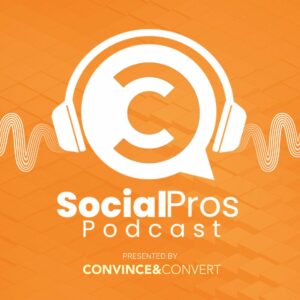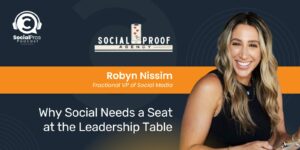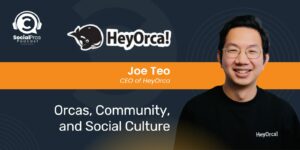Hosted By
About Social Pros Podcast:
Social Pros is one of the longest-running marketing podcasts in existence (10 YEARS and counting), and was recently recognized as the #1 Audio/Podcast Series by the Content Marketing Awards.
Our purpose? Making sure that we speak to real people doing real work in social media.
Listeners get inside stories and behind-the-scenes secrets about how teams at companies like Google, Reddit, Glossier, Zillow, Lyft, Marvel, and dozens more, staff, operate, and measure their social media programs. With 600+ episodes, the Social Pros Podcast brings the humanity of social media to the forefront, while providing incredibly useful marketing strategies that listeners can immediately implement.
Follow Social Pros on LinkedIn.
To inquire about becoming a guest or show sponsor, please email our Executive Producer, Leanna Pham, at leanna@convinceandconvert.com.
Apple Podcast Reviews:
The Social Pros podcast has quickly become a favorite in my feed! I'm consistently impressed by the engaging conversations, insightful content, and actionable ideas. I truly learn something every time I listen!
@Arlie KThis is absolutely an awesome listen for anyone in communications or social media!!
@Will31CThis podcast has become one of my staple weekly podcasts for learning about marketing! Love the conversations that they have and it's always enjoyable and educational!
@Simonstone95Love the podcast - informative, in depth and spot on for any business size.
@MissTriathlon
Jodi Gersh, Director of Social Media at Gannett Company, joins the Social Pros Podcast this week to discuss advertisers and sponsorship in the news media world, slowly moving many media giants up the “social” ladder, and the value of using social internally for enterprise solutions. Read on for some of the highlights or listen below for […]

Jodi Gersh, Director of Social Media at Gannett Company, joins the Social Pros Podcast this week to discuss advertisers and sponsorship in the news media world, slowly moving many media giants up the “social” ladder, and the value of using social internally for enterprise solutions.
Read on for some of the highlights or listen below for the full podcast.
Listen Now
Click the play button to listen here:
[podcast]http://socialpros.podbean.com/mf/web/f2b4bg/SocialProsEpisode41.mp3[/podcast]
Download the audio file:
http://socialpros.podbean.com/mf/web/f2b4bg/SocialProsEpisode41.mp3
The RSS feed is: http://feeds.feedburner.com/socialprospodcast
Find us on iTunes: http://itunes.apple.com/us/podcast/convince-convert-blog-social/id499844469
Please Support Our Sponsors
Huge thanks to data-driven social media management software company Argyle Social for their presenting sponsorship, as well as Infusionsoft, Janrain, and Jim Kukral at DigitalBookLaunch. We use Argyle Social for our social engagement; we use Infusionsoft for our email; Janrain is our crackerjack social integration company, and Jim is our guest host for the podcast (and a smart guy).
Social Pros Highlights For Your Reading Enjoyment, Thanks to Speechpad for the Transcription
Expanding Into Engagement
Jay: Jodi, what do you use to send tweets and such?
Jodi: Gannett has recently rolled out Spredfast across all of our newspapers, TV stations: USA Today, United Healthcare, Deal Chicken (which is our daily deals). It’s been a project since February.
It has come in very handy actually in these storms. With Hurricane Isaac earlier this year, and then Sandy, we were able to use it to set up a 24/7 social central desk where we were able to push across multiple sites and help out markets that were in the path.
Jay: Are you using social to break news at this point? Or are you using social to draw attention to news that you break on your own web properties? What is the relationship between social outposts and web properties and mobile apps?
Jodi: There are the goals of how we want it to work, and then there’s the reality of where we are right now. The goals are obviously to promote the journalism that we’re doing. That’s the easier one, that’s the one they’ve got down: sharing their links and posting what they’re working on and what they’ve written.
We’re really trying to expand that more into engagement with our communities, outreach, using it to enhance our reporting. To actually, on the investigative reporter side, diving into all the data that’s out there in social as well as customer service concerns. Listening to what people are saying not just about us, but in our communities, and jumping in where we can.
and jumping in where we can.
It’s expanded beyond just the promotion of what we’ve written. Obviously everybody wants you to click on their links and go back to their site. For media companies it’s always been more of a challenge than say brands like Coca-Cola where they’re OK if you just stay on Facebook. We’re selling ads on our sites, and that metric has always been page views. A lot of people are like, “Oh, let’s just push stuff out on social and get people to click on their links,” but we’re really trying to change that model and look at a metric that isn’t just page views but engagement with our brands and what that can lead to.
Eric: Are you guys experimenting with broader programs that incorporate your advertisers in your social feed? Either through sponsorships or promotions or campaigns?
Jodi: Yeah. It’s really hard, we’ve always had sponsorships for things, but being the media, there has to be a separation of church and state, if you will. We really can’t have an advertiser sponsoring some content that we’ve written, because there’s the perception of possibly writing that because we’re getting paid.
It’s a little tricky. When people say the news industry is in trouble and newspapers are dying, there are bigger issues than just that people aren’t necessarily reading newspapers as much. There’s always the things that tend to work for social media marketing but are much harder for our industry.
Jay: Jodi, you’ve been at Gannett for quite a while now — ten or 12 years? Am I correct?
Jodi: I think I’m in my 13th year right now. Obviously it didn’t start in social media, because it didn’t exist back then. My brother actually is an entrepreneur, and he founded a social network in 2003. To put it in perspective, that’s the year that MySpace came out.
I was already at USA Today. I think at that time I was at a project manager, but he asked me to join this social network and help him figure some things out and beta test. My degree is in sociology, so I was already drawn to the idea and the behaviors of people sharing things online. My start in social media really came from being fascinated by it and trying to help my brother’s company out. In 2008, I said to Gannett, “You guys really should be looking at this.” So I created the social media manager position way back then.
Jay: Can you talk a little bit about your position as the social media manager, and how you work with other social media practitioners at individual newspapers, TV stations? What does that nexus look like between you as the “corporate person” and then individual participants at the publication level?
Jodi: The role has evolved. When I created the social media manager role, it wasn’t exactly what Gannett wanted at that time. A lot of it was on the side, grass roots. It was finding those people that were like me, that were reading Mashable every day. Finding those people, that was the first thing that I did, and just created a weekly conference call where we would talk about social media. Then it slowly evolved and became a little bit more institutionalized, which is good. They started to actually create some real roles at some of these newspapers and TV stations specifically for social media.

My role was really finding what one of our sites or markets was doing really well that I could take and share with the rest of our sites. Or have I read something somewhere, could I learn things or gain access to things that I could then share to the rest of Gannett-land?
It was always a challenge because I wasn’t at a newspaper or TV station myself, so a lot of the things that I said, “Oh, we should try this,” I couldn’t myself actually try. All I could do is rely on those people to take what I thought might be good ideas and try them. I learned a lot more from them probably than they learned from me, but the role was really taking what I’m learning and sharing that with everybody else.
We still have that weekly call every Tuesday, but it’s much bigger now. There’s probably about 40 or 50 people at any given time that are on the invite, and we’ve had guest speakers come in and talk about Facebook’s got some new thing that they’re doing, we’ll bring someone from Facebook on the call.
My role then evolved and I actually became director of social product development last year. Which was much more about how to make our products social, how to build social into our existing products.
For example, the USA Today’s Superbowl ad meter. I was working with Facebook to figure out the franchise product that USA Today always had, how do we bring it into the social era and make it more about sharing what you’re picking and viewing the videos with your friends?
Jay: Because previously it was a panel, right? Of people sitting in a room, saying “What do you think?”
Jodi: Strangely enough, it still is a panel. Every year they bring in people, multiple locations in the U.S., to sit in a room and watch the Superbowl in real time. They don’t get any breaks except half-time, so they’re just sitting there and watch every commercial. Then they have a little dial and they rate what they thought of those ads. That gets a big spread in the paper the next day, and a lot of the brands really look to that to see, “How did we do?”
The Facebook part of it was the same name — it still was the ad meter — but it was a separate sort of thing because we were picking the winners, but we didn’t necessarily watch every commercial, and we might have been at a party and drunk. So it wasn’t as scientific as the panel, but it still was more fun, and that’s what you’d expect something like that to be. It was a really good partnership and a fun way to take a previous franchise product and make it more social.
Now this year I’ve actually changed roles again, and now I’ve moved to the news division, which is less about the product side of social and more about the behaviors. Working with our journalists and our editors and trying to figure out how to make our newsrooms more social, how to embed social into everything that we’re doing.
I’ve sat in some news meetings with some of our newspapers. They’ll go around the room and each reporter or editor will say, “We’ve got this going online this afternoon.” They’ll get to the social media person and they’ll say, “How can we promote this thing that we already did on social media?” That’s the role of the social media person in the newsroom.
I’m trying to change that to be more of, “Hey, we’re thinking of writing this story. Social media person, can you help me figure out where I can find sources or how I might dig into Facebook or LinkedIn groups? Does this story even have a social end to it from the planning process?” Bringing social into the whole story planning process is something I really want to start to get all of our newsrooms to do.
Jay: Does that include using social for internal collaboration? Things like Yammer and Chatter and that sort of type of software?
Jodi: Yes. We’re using Yammer internally, Gannett and USA Today and all the newspapers and TV stations are on there, but all the sales folks already had Salesforce, so they are on Chatter. It’s all over the place right now, but I’ve been fascinated at Yammer and how amazing that somebody in Louisville could go on there and say, “Hey, has anyone figured out how to get the video on the homepage to do X?” Someone in Sacramento comes in and say, “Oh yeah, we did this.”
These are people that don’t even know each other and would probably have spent hours trying to figure out who’s the person that might be the right person to answer this question. I’ve just been fascinated how our employees are willing to just jump in and help each other across markets, across divisions.
I’ve been thrilled with the use of Yammer and I hope that it continues to grow. That’s another grassroots thing, though. It hasn’t been something that we’ve forced everybody to use. I feel like sometimes when corporate has a corporate initiative like that, it gets less adoption.
Promoted Posts – To Use or Not to Use?
Eric: How are you guys managing the split between organic social content and paid social content? There’s the person that’s on top of Twitter and Facebook and other channels. Are they the same person that’s putting ad budget behind that, or is that even something that you guys to do try to amplify your social content?
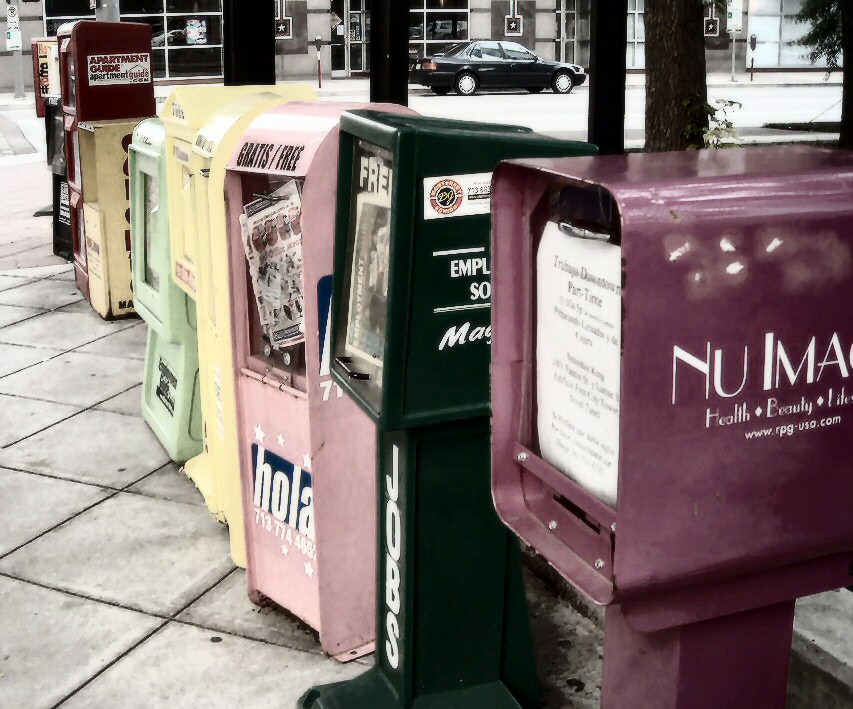
Jodi: Prior to this year, we really didn’t. Gannett purchased BLiNQ Media this year. We also own Gannett Local. These are companies that do this for a living for other companies and brands, help them with that exact thing.
Internally though, it’s not something that we’ve done that much of, but I will say we’re starting to. It’s hard because there was never budget towards it. Trying to put a new line item in a budget that’s never been there before isn’t the easiest thing to do.
We’ve been experimenting, we’ve had tons of conversations with Facebook and Twitter about this. I’m still trying to get some answers from some of our markets that have done it, to see if it actually has been successful.
It’s not like I have so many examples. We’ve had probably three markets do promoted posts on Facebook. They may not be called promoted posts. There’s a bunch of different products that do that kind of thing, and I think one or two markets do something on Twitter.
I just don’t know yet if it’s worth the money. I’m sure if my Facebook reps hear this they’ll get mad at me, but then they’ll also know that I tell them to their face, the whole EdgeRank thing is just beyond frustrating. But Facebook’s free, and they never guaranteed that every post you made would be seen by everybody. You can’t really get mad at them.
At the same time, we did have this expectation over the last few years of building these fan presences and trying to increase our fan base, and providing good, engaging content. Even if you have the most engaging content, still a small percentage of people are even seeing it. That’s been very frustrating.
A New Kind of “Social” Ladder
Jay: How are you treating some of these new, more photo-centric social media opportunities? Is that something that you’re encouraging that is in the experimental phase? Do you have people who are out there shooting news photography put extra shots up there, or is that just something that’s not ready for primetime yet?
Jodi: It definitely is. I actually have on our Sharepoint all the Gannett sites that have Instagrams and Pinterest. A lot of our sites are doing that. I encourage it.
I’ve been working on this social media guidebook that we’re going to be rolling out later this year to all of our markets, giving them the tools to create their own strategies. In there it really goes in depth on this social media ladder that we’ve created. Which is not everybody’s going to be at the top of the ladder in terms of their skills, their resources, where they are currently.
Internally, some markets may just have an automated feed going to Twitter, which isn’t good. Whereas some markets may be all over the place. On Pinterest, on Instagram, trying out all the latest technologies. They have a lot of resources.
The ladder says, “If you’re here on the ladder you shouldn’t be trying to jump to the top rung. You should be taking a step to the second rung on the ladder first.” Before you jump into Pinterest and Instagram, how are you doing on Facebook?
Basically, you want to be everywhere but first of all, as you’re identifying all of your goals, which every strategy starts with, if one of those networks makes more sense than Facebook… Which, based on Facebook’s user base, nothing really should make sense over Facebook, because that’s just where a billion people are. That’s going to be part of your strategy.
A lot of our markets have what we call passion topics. They’re focusing their content on the topics that they believe the audiences in their markets are most passionate about. For example like in Fort Collins, the Fort Collins Coloradoan, one of their passion topics is microbrews and beers. That’s a very passionate topic there in Fort Collins because they have a lot of breweries, and it’s a big part of their local economy. For them I would recommend hey, why don’t you check out Untappd? It’s a social network for beer drinkers, you could probably create an account and maybe follow some of your breweries and link back to some of the reviews or articles about what you’ve written about, some of the microbrews or the brewers.

That would be a case where one of these niche markets might make more sense, because it’s a topic that you’re trying to cover and really own in your market. Again, if you don’t have the basics of Twitter and Facebook down, then I don’t know if it really makes sense to jump into something else.
Jay: Do you find that some of that proliferation is driven by whomever is the social media person at each of the markets, and what their level of enthusiasm and expertise might be?
Gannett legal have come down pretty strict on the use of photos that we don’t own on Pinterest. We have obviously a lot of photos across the entire Gannett network. We’ve got all of USA Today and all of our hundred other media properties, but at the same time, some of the stuff that people were wanting to post weren’t our photos. That includes repinning. I think USA Today’s still doing a pretty good job. I know they’re doing an amazing job in Instagram. They’ve got the main USA Today one and then also USA Today Sports has an Instagram that’s really good.
Jodi: 100%, true. I’ll say with Pinterest, we started playing around with it early on. I personally really liked it and thought it was cool. So all these articles were coming out about how different companies were using it, and pin boards and all that. I follow some people that just basically post an image back to their articles. They’re using it like Facebook, which I think is really not the point of Pinterest.
Social Media Stat of the Week: <2% Political Advertising Spent on Digital Marketing
Eric: In 2012, it’s estimated that $9.8 billion will be spent in political advertising. Estimates say that of that $9.8 billion, $170 million will be the total digital political advertising for the 2012 election. $170 million is a fraction, it’s less than 2% of the almost $10 billion.
Still, $170 million is six times the digital spend of 2008. My question inside of all of this is how much of that $170 million is going to social advertising, Facebook and Twitter? I dug and dug and dug, and neither Twitter nor Facebook disclosed any political ad revenue figures.
As you can imagine, overwhelmingly, the political ad spend is going to television. It’s interesting to contrast the presumably small amount of dollars going into social advertising with the deluge of political crap on my Facebook page or Twitter stream over the past few weeks.
Jay: I’ve seen some promoted tweets and promoted accounts on Twitter in particular from the Romney campaign. I see a little bit on Facebook from the Obama campaign, but you’re right, not a ton on the social side. I think the digital percentage is really fascinating.
Digital as a percentage of overall ad spend in the U.S. is much higher than 2%, and I think it approaches 10, 12, 13 depending on whose studies you look at. To say that, if you turn that number upside down, political campaigns are 600% less likely to spend a dollar on digital marketing than everybody else, that I find really fascinating.
As a former political consultant there’s a lot of reasons that I could bubble up about why that’s so, partially because people who are political consultants make their money on television not on banner ads. We always say digital is the most impactful, digital is the future, but yet here’s people certainly at the presidential level, fighting over the biggest stakes that there ever has been, and they’re like, “Eh, digital. Feh.”
Of course digital still does oversample a little bit on education and income. This election is being fought over the undecideds, who typically from a socio-economic standpoint may not sample as high on education income. There may be some targeting issues there as well. Still, out of $10 billion, less than $200 million on digital, it seems like a pittance.
Eric: It’s surprising. You wonder if the social piece in particular relates to effectiveness or education.
Twitter and Facebook had been aggressively courting political campaigns. Not just for the election that’s happening tomorrow, but also just as a springboard to develop relationships with these politicians as an ongoing kind of thing to keep in touch with their constituency.
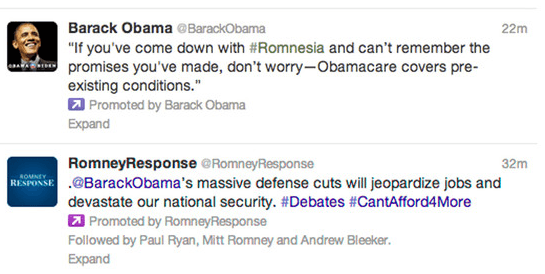
Jay: I’ll bet you in the off-year elections two years from now, you will see that number increase dramatically, certainly the social media side. I think part of it, and this again just speaking from my experience as a campaign manager, is that most professional campaign managers don’t want to put too many eggs in the newfangled basket. Because that’s how you become an ex-campaign manager.
There is a reluctance to go too far out on that limb and go too far against conventional wisdom, because then even if that wasn’t why you lost, that’s what gets blamed for why you lost. That sounds ridiculous, but literally, I’ve had many of those conversations and in fact, as somebody who embraced digital earlier than most, it’s one of the reasons among others that I got out of politics as a career.
This election can’t come soon enough. Not just the advertising, but I don’t really like people on Facebook that much anyway. I certainly don’t like those people with a thick layer of political edginess on top of them. I’m just tired of it. It makes me embrace social media in general less.
Jodi, I know you and I have talked about that, that you’re getting a little bit disillusioned with social in general. Is that because it’s becoming more and more media and less social?
Jodi: It’s crazy to say, I just feel like people think it’s a magic pill still. When they’re putting together their plans, it’s like, “Oh, and social media.”
This goes almost back to Eric’s question about paid and promoted, are we seeing any benefit to it? Is it actually panning out? I’m starting to think that it isn’t some big magic pill, and I know I’ve already talked about this. It’s time for it to become part of everything now and not be its own separate bucket anymore. Although I know that I’m ready for that and I know other people that are ready for that, most people are not ready for that, and so it’s going to still be a little while.
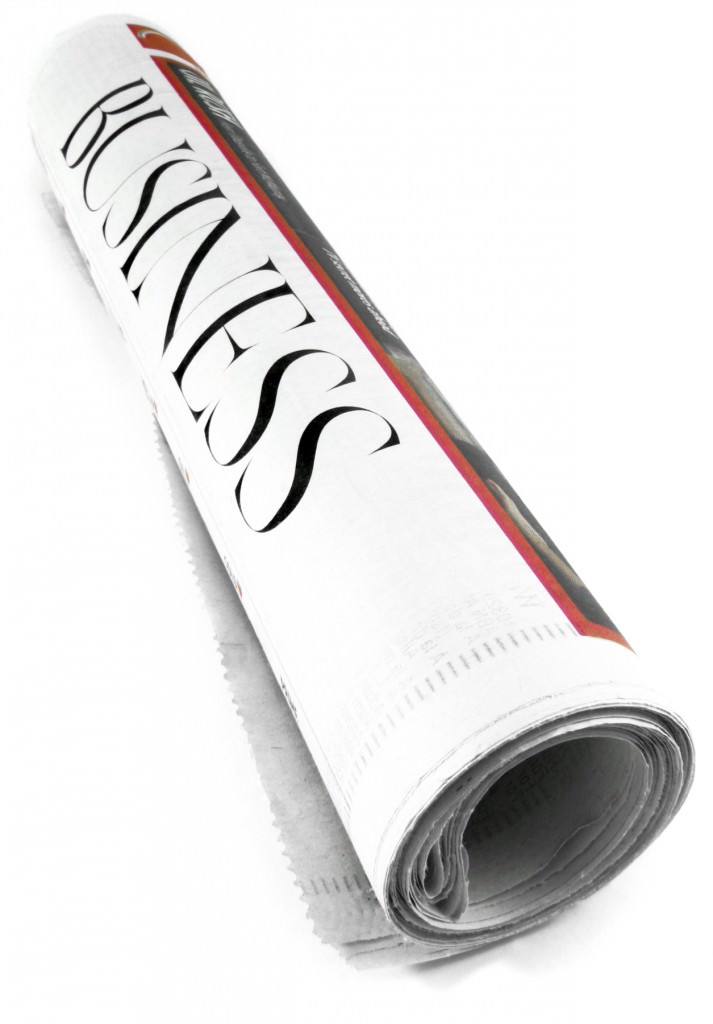 I’ve started recently getting disillusioned with the whole, “Oh, social media, yay.”
I’ve started recently getting disillusioned with the whole, “Oh, social media, yay.”
Eric: Honestly, Jodi, that will probably make you a better social media manager if you think about your job less as being this social person and more about the business person that just knows how to wield this tool.
Jay: For many, the value in social is in the internal collaboration and efficiencies and workforce empowerment, the kind of things we talked about earlier with Yammer, for many companies that’s where the real value.
Jodi: Yeah, although I will say specifically for our industry, the change from it just being us knowing the news and telling you what you need to know, to us talking to our communities, finding out the news, working through the news with our communities. We talk about engagement — it’s such a buzz word now — but really engaging with those communities to tell the stories better than we ever told them before.
I think that’s very important, but I don’t see that as any different than our jobs have always been. We just have new ways of doing it better, if that makes sense.
But it opens up all new, obviously with Sandy, there were all these articles and posts about all the false rumors, the fake photos. It definitely makes the job of a journalist that much more important, and sometimes a bit more difficult. Vetting things that everybody’s immediately starting to spread, and wanting to know the story, we have to be much faster yet it’s important that we still do that due diligence that we’ve always done.
Jay: Yeah. As Amber and I said in the Now Revolution, every customer is a reporter now. Except that none of them are trained or have credibility. Unlike most actual reporters. Good news/bad news.
Social Pros Shoutout
Jodi: My first shout-out is going to go to Joy Mayer. She did a fellowship with the Columbia Foundation last year all about engagement in the newsrooms. I follow her documentation, follow her tweets. She’s awesome.
Jeff Sonderman. He is currently with Poynter, previously was with a new startup TBD.com in DC. His posts every day are ones that I share. They’re very in depth on the intersection of social media, journalism, new apps, technology. Definitely a forward thinker and covering the right things that effect our industry.
One is someone that’s a little bit more well known, but Mathew Ingram with GigaOm, I’m sure you know him. He really gets the issues that we’re facing in our industry, and certainly the openings that social media gives us, but also the difficulties that it causes us. Shout-out to him.
Lastly is one of our internal people, Mark W. Smith, who is the social media marketing manager at USA Today but formerly the tech reporter at the Detroit Free Press. He’s @markdubya on the Twitter, and he is constantly breaking tech news. He can’t get out of that trend, but he’s definitely someone worth following.
Jay: Fantastic. A great batch. Jodi, you were terrific. We appreciate you taking the time.
See you next week!
